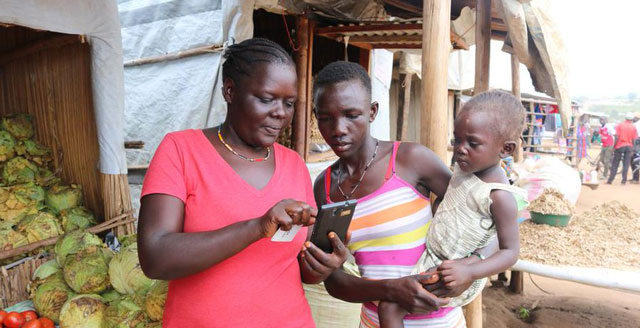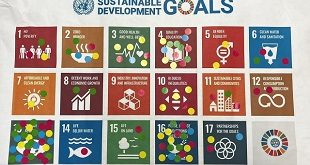
e-health startups are attracting more funding to extend health services to the last mile frontier
COMMENT | David Birungi | This year’s World AIDS day is being celebrated under the theme and call to action “Equalize”. The UN agency, UNAIDS, is urging every one of us to tackle inequalities that perpetuate the AIDS pandemic in the world. UNAIDS has urged stakeholders to increase access to suitable services in the prevention, testing and treatment of HIV especially in the global south. They have also urged for the reform of the laws, regulations, and practices to tackle the stigma faced by people living with HIV/AIDS.
Lastly, UNAIDS has also revealed that in the last two years of COVID-19 and other global crises, progress against the HIV pandemic has faltered, resources have shrunk, and millions of lives are at risk as a result. Uganda having had one of the longest lockdowns is slowly recovering. The fight against HIV/AIDS should continue to be at the centre of this recovery.
According to the Uganda Aids Commission’s Guidelines for Multi-sectoral HIV/AIDS mainstreaming in Uganda released before the COVID-19 pandemic, the minimum interventions for each sector include HIV prevention interventions like creating awareness through workspaces and communities. It includes provision of effective care and treatment and systems strengthening like development of HIV/AIDS workplace policies. Delivering on these commitments requires, without differentiation, affordable connectivity.
Defeating HIV/AIDS is our shared responsibility, and as we commemorate #WorldAIDSDay2022, lets remember the theme and continue to Equalize access to essential services to fight HIV/AIDS pic.twitter.com/TlWgs7xrrK
— Airtel Uganda (@Airtel_Ug) December 1, 2022
You are probably reading this off a terminal device, a laptop or smartphone. So are the many HIV treatment and care personnel and the members of PLHIV support groups. Yet many more beneficiaries may not get the opportunity to get valuable information because of the prohibitive cost of terminal devices.
In the latest Uganda Communications Commission quarterly Q1 report 2022, it is reported that e-health startups are attracting more funding to extend health services to the last mile frontier. Some are delivering ART drugs, on time and improving treatment outcomes. This service extension relies heavily on the Smartphone.
Can the latent potential of the smartphone, if well harnessed, improve prevention efforts, allow scientists to collaborate better and deliver better diagnosis, treatment and spread the average cost of ART among many (in need)?
In the same report, it is reported that there are 35million SIM activated devices, 10.48 million of which are Smartphones. The application of the Smartphone in the HIV/AIDS prevention, test, treatment, and care is limitless. Various research has been made indicating the cost of ARVs and ART related support services to be $350 annually per patient. This cost includes the cost of drugs and related care services.
We have seen a smartphone, in concert with social media, break barriers and equalize public and corporate accountability. Presidents, CEOs previously out of reach are now one tweet away. Can the latent potential of the smartphone, if well harnessed, improve prevention efforts, allow scientists to collaborate better and deliver better diagnosis, treatment and spread the average cost of ART among many (in need)?
The answer is yes. But the latent potential of the Smartphone must be harnessed first, using affirmative actions. I have seen some applications that improve retention in care in which a patient has access to his medical records on phone, the way we have access to our bank accounts. The patient gets results, drug reminders, asks questions and gets social support from dedicated social workers.
On the research and co-working spaces front, the smartphone equalizes by removing barriers to research dissemination. A Doctor and her team in rural Uganda would be able to access, share, enrich new HIV/AIDS care protocols in real time. They would not need to congregate near a lone computer, where it exists, to understand a change in the treatment plans. It is easier to put smartphones in the hands of health workers than putting computers in health centres. For goodness’ sake, the computers are still needed.
“The cheapest smartphone goes for about Shs240,000. Now, the challenge we are dealing with is how to bring this price down so that everybody can have an internet-enabled device,”- @UCC_Official executive director Irene Kaggwa Sewankambo @UCC_ED https://t.co/cCRR1eNQJI pic.twitter.com/W9jQ2iQjWM
— Global Digital Inclusion Partnership (@GDInclusion) November 23, 2022
Lastly the same smartphone can be used to mobilize resources through tailor made micro insurance products where all of us pay little so that no one ever pays a lot. This has been proven in many cases. The Mobile Money ecosystem is already in place to support this.
The price of smartphones is declining at a pace slower than the goals we have set ourselves to end the HIV/AIDS pandemic by 2030. The most affordable entry level 4G smartphone costs about $65 or UGX 250,000/= and is taxed nearly 34%.
The telecoms and other sector players have developed hire purchase partnerships that allow customers to get an entry level smartphone at 10% of the cost and pay the rest over 12 months.
These efforts need to be supported by a common agenda that looks at a Smartphone, the entry level one, as a tool of trade for many things including the fight against HIV/AIDS. Taxes can be reduced. HIV programs should make a smartphone central to the outreach programs. That way we shall equalize the fight.
*******
 The Writer, Birungi, is the Public Relations Manager – Airtel Uganda
The Writer, Birungi, is the Public Relations Manager – Airtel Uganda
 The Independent Uganda: You get the Truth we Pay the Price
The Independent Uganda: You get the Truth we Pay the Price



